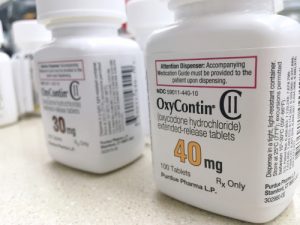
U.S. Rep. Greg Walden (R-OR), ranking member of the U.S. House Energy and Commerce Committee (E&C), led fellow committee members in requesting information on how a U.S. Food and Drug Administration (FDA) label change for OxyContin, a controlled narcotic used to treat severe pain, has contributed to the nation’s ongoing opioid crisis.
Rep. Walden, along with Oversight and Investigations Subcommittee Republican Leader Brett Guthrie (R-KY) and U.S. Rep. Morgan Griffith (R-VA), sent an 11-page letter on Oct. 14 to FDA Commissioner Dr. Stephen Hahn “to facilitate our understanding of what factors contributed to the opioid crisis over the last two decades and how such a public health disaster can be avoided in the future.”
The lawmakers’ inquiry follows a June 2019 briefing that the FDA provided to E&C Committee leaders in which the agency said that the opioid crisis was not exacerbated by its decision to approve the label change to Purdue Pharma’s OxyContin in 2001. The FDA also provided data on the quantity of prescriptions dispensed, but did not present data on the opioid dosages or durations of the dispensed prescriptions, according to the committee.
“Thus, this additional context and customary data standardization should be taken into account in assessing the potential role the 2001 label change had on the opioid epidemic,” Rep. Walden and his colleagues wrote. “Studies, documents and other data support these concerns related to higher dosage and longer duration in oxycodone prescribing (including OxyContin prescribing) that contributed to the opioid crisis.”
The members also cited analyses showing Purdue Pharma had a higher market share if measured by the dosage strength of the opioids, with one analysis showing Purdue was the top oxycodone manufacturer by this measurement, according to their letter. “Purdue internal documents indicate that the company may have viewed the effect of the label change as an opportunity to expand its market,” they wrote.
In fact, following the 2001 FDA-approved label change, OxyContin progressively became a top drug for abuse while sales of opioids increased, even more than doubling to $2.3 billion in sales in 2008 from 2007, their letter states.



